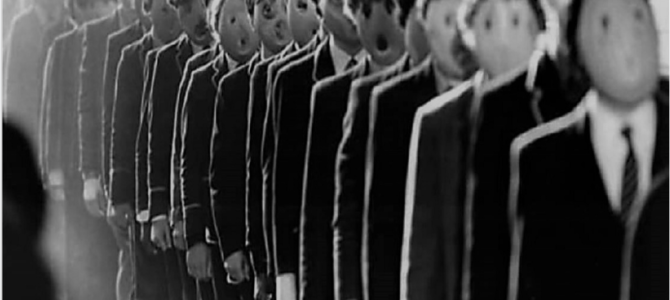
One step backward. They asked another question. One step forward. The PA system buzzed back to life. Another question, another step forward. Then another, and another. It had been decided.
It was 2015 during my freshman year of high school. I had just been exposed to critical race theory for the first time. We were in the midst of a privilege walk, a racial shaming exercise that uses selective questioning to substantiate claims of privilege and oppression.
Now, six years later, critical race theory has just recently become a target for the right, with various different states outlawing it and parent groups forming to oppose it. This cancerous ideology has had a presence in our K-12 public schools for much longer than many realize, however. I know because my high school attempted to indoctrinate me with it and, when I fought back, to reeducate me.
Taxpayers Paying for Indoctrination
I went to high school at a mid-sized government school in the heart of the Silicon Valley. The student body was highly diverse, with large Asian and Hispanic populations and a white plurality. The Public School Review noted my school was in the top 20 percent of the most multiracial schools in California, a state that’s already far more multi-ethnic than most of the rest of the country.
My first encounter with critical race theory was in my freshman year, when we skipped our P.E. class to engage in a racial struggle session, hosted by a teacher and a special cadre of students who had been handpicked and placed in her equity advisory class.
I began to catch on when the presenters played a video titled “What kind of Asian are you?” The clip features a buffoonish caricature of an insensitive white man, the video’s antagonist, who becomes the subject of scorn after he commits several “microaggressions” as he attempts to relate with the video’s heroine, an Asian woman. She then humiliates him and trots off.
I was beginning to wonder if our conversation was really about advancing “equity,” or if it was about scapegoating those who pose an obstacle to progressivism’s long march. They didn’t leave me wondering for long. Shortly after the video, we were taken into the school courtyard, where chalk lines had been meticulously drawn on the pavement, where we were then told to stand on the center line. We then started our privilege walk.
The presenters asked us a series of questions, telling us to step forward or backward depending on our answers to inquiries like “Have you ever felt like you’ve been racially profiled?” or “Did your parents graduate from college?” By the time it was over, whites were in the front, then Asians, Hispanics, and finally African Americans. The verdict was in.
But while trivial questions like “Can you easily find Band-Aids that match your skin tone?” were used to substantiate sweeping claims of privilege and oppression, more pertinent inquiries that would’ve jammed the narrative were excluded.
We were never asked, for example, to take a step back if we’d be systematically discriminated against when we applied for college. Nor were we asked if we had ever felt that the media had ever weaponized our ancestry against us to brand us as oppressors, or if violence against us had been ignored because of our race, either in America or abroad.
Similar exercises held today likely don’t ask questions that account for recent developments, like multi-million-dollar organizations branding phrases like “It’s Okay To Be White” as hate slogans, critical race theory teaching white children to hate themselves, or the adoption of the language of genocide by academics who dub whiteness a “parasitic condition” without a “permanent cure,” or fantasize about committing acts of racial violence against white people.
The selective questioning was intended to create a certain outcome, a prime example of a conclusion in search of evidence.
Afterwards, we were divided into breakout groups, where I was chastised by the group leader and a peer who made a scene when I disputed a claim that our city upheld white supremacy.
Although the event had left a bad taste in my mouth, I gave it little thought until the next year when I saw I’d been placed in the class that hosted the yearly event. I was told I’d been recommended by faculty members who thought I’d be a good fit for the class. As a vocal conservative, I knew there was no chance that any of my teachers genuinely believed I’d be a good fit. I knew the equity advisory faculty member was well aware of my beliefs due to the pushback that I offered at her event.
I was left to conclude that I was placed in the class in an attempt to reign in my dissent. On the first day, my suspicions were confirmed. Not only was I the lone straight white male in the year-long class, I was also one of the only students who wasn’t left-wing.
Throughout the class, we watched Emma Watson’s feminist speech to the U.N, sifted through Peggy McIntosh’s Invisible Knapsack of white privilege, and deconstructed various forms of privilege and oppression, always noting who the “oppressors” were. We were even shown a video that advocated for affirmative action, which was then shown to the rest of the school.
Rather than soften my conservative proclivities, the class hardened my disposition towards the “social justice” movement and what would soon be known as critical race theory. When it came time for us to run the struggle session that I had been subjected to the previous year, my dignity nagged at me, and I refused to take part.
I noticed the tragic irony of being told that I was the beneficiary of structural racism while a government school that my family helped fund marched in lockstep with much of the media and higher education, telling me on a weekly basis that, because I am a straight, white, Christian male, recognizing these facets of my identity as anything other than a source of shame was evidence of my own wickedness.
Upon leaving the class after my sophomore year, the consistency of my exposure to critical race theory slowed down, but the severity of such instances didn’t, with racial grievance politics permeating our discourse. One teacher instructed me not to use the word “minority,” claiming it was offensive since it meant “less than whole.” When I objected, I was mocked, with my teacher remarking, “You know white people will be a minority one day, right?”
In a public speaking class, a two-minute speech I delivered turned into a 45-minute exchange after I decried the villainization of white people on college campuses, citing an anti-white article from Texas State University’s student newspaper titled “Your DNA is an Abomination” that argued white people are genetically inferior and claimed that “white death will mean liberation for all,” even ending with “I hate you because you shouldn’t exist.”
My teacher called me back up to the podium, asking in front of the class if I “understood why some people might feel this way, given our nation’s history?” I was in awe. A teacher who would’ve described herself as an “anti-racist” was attempting to justify the rhetoric of genocide in an article that argued for the genetic inferiority of white people.
This was the type of outright, anti-white hatred that critical race theory exposed me to, beginning six years ago. Since then the situation has undoubtedly worsened, with CRT even targeting children in elementary school.
Critical race theory isn’t new, but the fight against it is. After years of pushing back against it, it’s been heartening to watch a mass movement rise to counter the left’s politics of racial grievance as the right relearns how to organize on the grassroots level, even as impotent so-called conservatives like David French attempt to undercut their success.
Moving forward, it will be incumbent not only on lawmakers and commentators but on parents, educators, and even students to continue to organize against ideologies like critical race theory that use appeals to egalitarianism as a smokescreen while they engage in blood libel.








